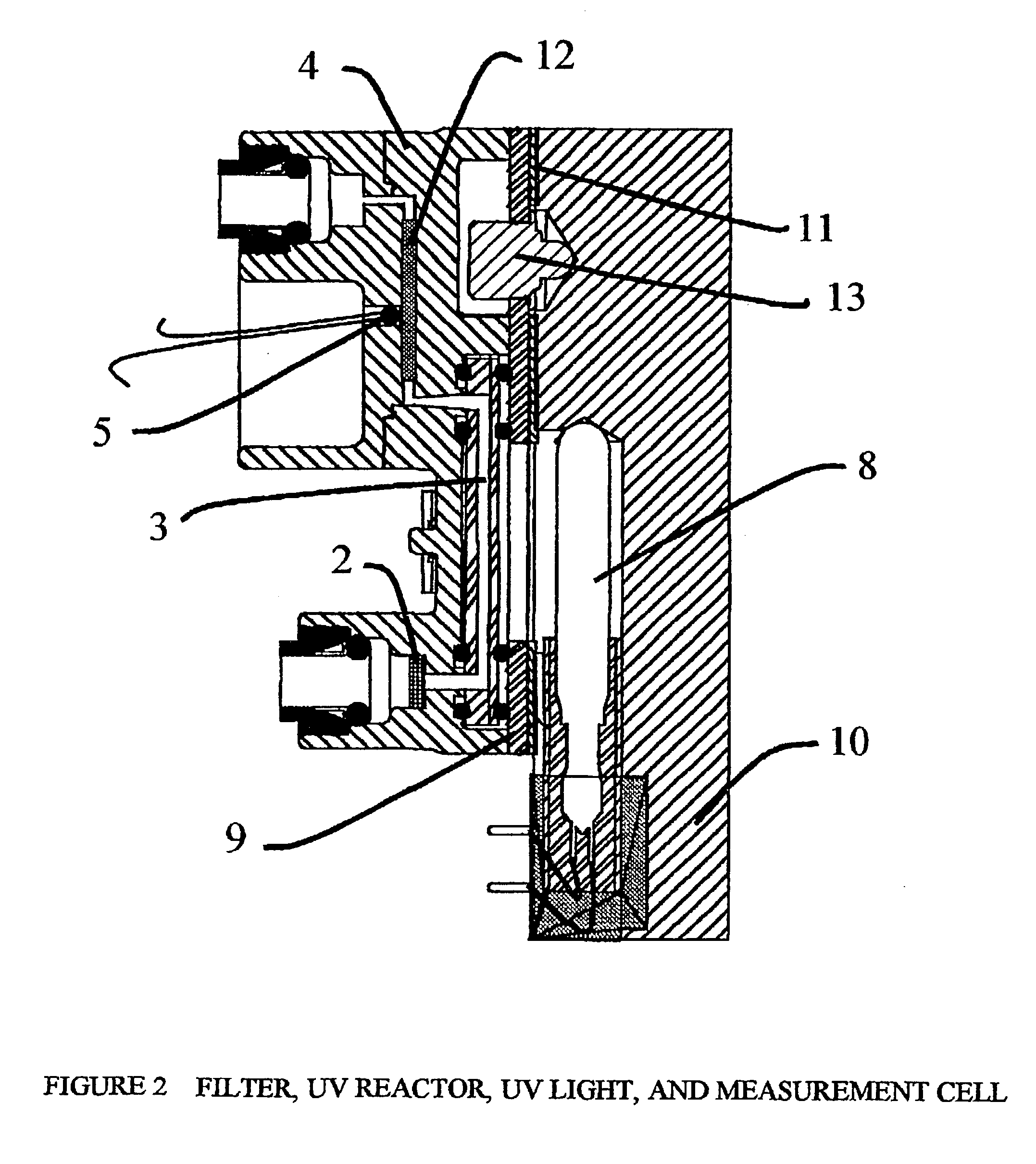Pulsed-flow total organic carbon analyzer
a total organic carbon and analyzer technology, applied in chemical methods analysis, instruments, material impedance, etc., can solve the problems of less reliable, less accurate, and complex algorithms of voss methods and apparatuses
- Summary
- Abstract
- Description
- Claims
- Application Information
AI Technical Summary
Benefits of technology
Problems solved by technology
Method used
Image
Examples
Embodiment Construction
By modifying the electrical circuitry, it is possible to make the conductivity measurements according to the present invention without the electrodes being in contact with the water. With such modification, the electrodes could be placed on the outside of the water stream. This could potentially increase reliability, reduce assembly labor, and possibly reduce total cost.
In another embodiment, the conductivity cell could be separated from the UV reactor by tubing and fittings. This is not generally a preferred embodiment because of cost and reliability issues.
The present invention could be operated at many different temperatures. Although testing reported herein has been done at room temperature, the oxidation kinetics would be expected to be better at somewhat elevated temperatures. This offers the possibility of still faster TOC measurements.
The configuration of the UV reactor and conductivity cells according to the present invention could be altered in many ways. For example, the ...
PUM
| Property | Measurement | Unit |
|---|---|---|
| wavelengths | aaaaa | aaaaa |
| wavelengths | aaaaa | aaaaa |
| wavelengths | aaaaa | aaaaa |
Abstract
Description
Claims
Application Information
 Login to View More
Login to View More - R&D
- Intellectual Property
- Life Sciences
- Materials
- Tech Scout
- Unparalleled Data Quality
- Higher Quality Content
- 60% Fewer Hallucinations
Browse by: Latest US Patents, China's latest patents, Technical Efficacy Thesaurus, Application Domain, Technology Topic, Popular Technical Reports.
© 2025 PatSnap. All rights reserved.Legal|Privacy policy|Modern Slavery Act Transparency Statement|Sitemap|About US| Contact US: help@patsnap.com



